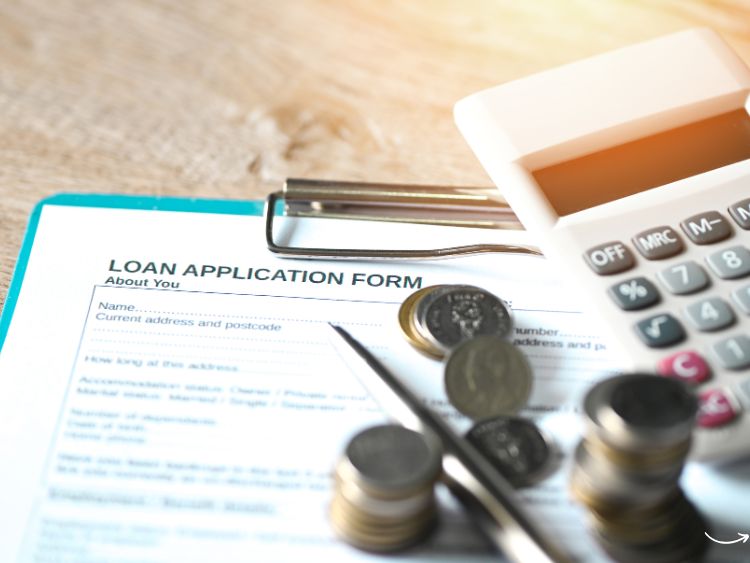Student loans can be a lifeline for many individuals seeking higher education. But as with any form of borrowing, it comes with its challenges. From navigating repayment options to understanding interest rates, student loans are a complex topic that requires clarity. So, if you’re asking, “How do student loans work?” or “How do I make the best choices for my financial future?”, you’ve come to the right place. In this guide, we’ll explore everything from types of loans to repayment strategies and answer frequently asked questions to help you make informed decisions.
What Are Student Loans?
Student loans are borrowed funds that help students cover the cost of education. Whether you’re attending a college, university, or technical school, these loans can finance tuition, books, and living expenses. Unlike grants or scholarships, loans must be repaid, often with interest. But the burning question is, which loan is right for you?
Types of Student Loans
Understanding the different types of student loans is the first step in making an informed decision. Generally, loans fall into two broad categories: federal and private loans.
1. Federal Student Loans
Federal loans are provided by the U.S. Department of Education and are often the first choice for students due to their favorable terms and conditions.
- Subsidized Loans: For undergraduates with financial need. The government pays the interest while you’re in school.
- Unsubsidized Loans: Available to both undergraduates and graduate students, but you’re responsible for all the interest from day one.
- PLUS Loans: Designed for graduate students or parents of undergraduates. They have higher interest rates but higher borrowing limits.
- Perkins Loans (Discontinued): Once a need-based option, but phased out in 2017.
2. Private Student Loans
Private loans come from banks, credit unions, or other financial institutions. While they might offer higher borrowing limits, their terms often depend on your credit score and may not be as flexible as federal loans. Watch out for variable interest rates that can balloon your debt if you’re not careful!
How to Apply for Student Loans
Navigating the loan application process is easier than it sounds, especially with federal loans. For federal aid, you’ll need to complete the Free Application for Federal Student Aid (FAFSA). Private loans have their application processes, usually involving a credit check and proof of income or a cosigner.
Step-by-Step Process for Federal Loans:
- Complete the FAFSA (available online).
- Review your Student Aid Report (SAR), which summarizes your eligibility.
- Accept the loans offered through your school’s financial aid office.
- Sign a Master Promissory Note (MPN) agreeing to the loan terms.
Private Loan Application:
- Compare lenders to find the best interest rates and repayment terms.
- Submit your application, which may include documentation like tax returns and credit reports.
- Review the loan agreement carefully, especially any clauses about repayment flexibility.
Interest Rates and Repayment Plans
Understanding how interest rates and repayment plans work is crucial for avoiding long-term financial stress. Federal loans usually have fixed interest rates, while private loans may have variable rates that can change over time.
Federal Loan Repayment Plans
- Standard Repayment: Fixed monthly payments for up to 10 years.
- Graduated Repayment: Payments start small and increase every two years.
- Income-Driven Repayment (IDR): Payments are based on your income and family size. After 20 or 25 years of payments, your remaining balance may be forgiven.
- Public Service Loan Forgiveness (PSLF): If you work for a qualifying employer (like a government or non-profit), your remaining balance could be forgiven after 120 qualifying payments.
Private Loan Repayment Options
Private loans offer fewer repayment options, but you can often choose between fixed and variable interest rates. Many lenders allow you to make interest-only payments while you’re still in school to keep your balance from ballooning.
How to Manage Student Loan Debt
If you’re already burdened by student loan debt, don’t panic. There are several strategies to help you manage and repay your loans more effectively.
1. Consolidation and Refinancing
- Consolidation: Combine multiple federal loans into a single loan with a fixed interest rate.
- Refinancing: A way to combine private and/or federal loans into one, potentially at a lower interest rate, but be cautious—refinancing federal loans will make you ineligible for certain benefits like PSLF or IDR plans.
2. Automated Payments
Setting up automatic payments can often lower your interest rate by a small percentage, saving you money in the long run.
3. Pay More Than the Minimum
Whenever possible, pay more than the minimum amount due each month. This will reduce the principal faster and decrease the total interest paid over time.
4. Seek Forgiveness Programs
If you’re in a qualifying field such as education, healthcare, or public service, look into forgiveness programs that could wipe out some or all of your loan balance after a certain number of years.
Common Pitfalls to Avoid
Student loans might feel like free money at first, but it’s crucial to avoid common mistakes that can haunt you long after graduation.
- Borrowing More Than You Need: It’s tempting to take the maximum amount offered, but stick to what you truly need to avoid excessive debt.
- Ignoring Interest While in School: If your loan accrues interest while you’re in school (as with unsubsidized loans), pay it off as soon as you can to prevent a larger balance upon graduation.
- Defaulting on Loans: If you miss payments for 270 days, your loan could go into default. This has serious consequences, including wage garnishment and damage to your credit score.
FAQs about Student Loans
Q1: How do I know if I’m eligible for federal student loans?
A: You must complete the FAFSA to determine eligibility. Most U.S. citizens or eligible non-citizens attending an accredited school can apply.
Q2: Can I get a student loan with bad credit?
A: Federal loans don’t require a credit check (except for PLUS loans), but private loans usually do. You might need a cosigner if your credit is less than stellar.
Q3: What happens if I can’t afford my payments?
A: Contact your loan servicer immediately. You may be eligible for deferment, forbearance, or an income-driven repayment plan to reduce your monthly payment.
Q4: Can student loans be forgiven?
A: Yes, under specific programs like Public Service Loan Forgiveness (PSLF) or Income-Driven Repayment Forgiveness.
Q5: What’s the best way to pay off my student loans fast?
A: Pay more than the minimum whenever possible and consider refinancing to get a lower interest rate.
Conclusion
Student loans are a helpful tool for financing your education, but they come with significant responsibilities. By understanding the types of loans, repayment options, and potential pitfalls, you can make informed choices that will set you up for financial success. Remember, whether you’re just applying or already repaying, there are options to help you manage your debt wisely.
Authoritative Links (Not Hyperlinked)
- www.studentaid.gov
- www.nslds.ed.gov
- www.consumerfinance.gov
- www.ed.gov



